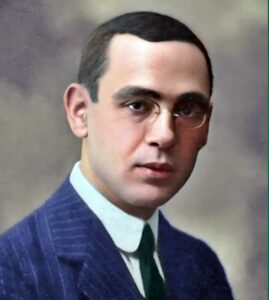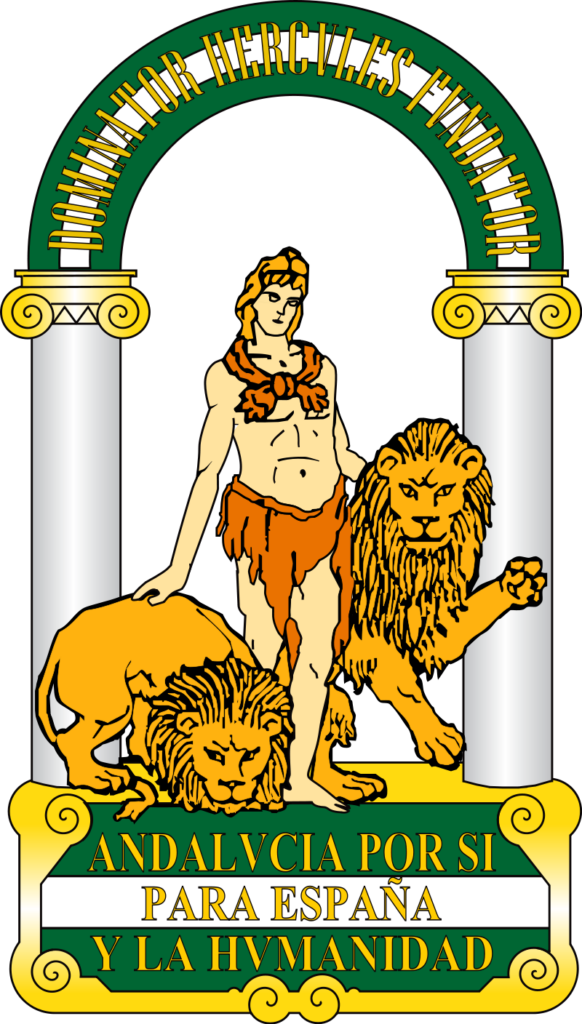
Blas Infante Perez was born in Calle Carrera in Casares (which now houses a museum and tourist office), on the 5th of July, 1885. He was the son of Luis Infante Andrades and Ginesa Perez Romo, a family of well-to-do farmers.
At 11 years of age Blas began studying at a boarding school in Archidona, but in 1902 he returned to studies at the Faculty of Law in Granada, graduating with a degree within two years, before studying to be a notary public. In 1910, he received a posting to Cantillana.
During In this period, Blas Infante joined the Ateneo in Seville where he met people from the “Andalucismo Culturista†Andalusian Culture nationalist movement, which gave birth to “El Ideal Andaluz†(The Andalucian Ideal), his first work and one which contained his ideological framework for Andalucian nationalist politics.
Also during this period, he founded the Centro Andaluz (Andalucian Centre) in Seville, a platform for his regionalist plans.
In 1918, he stood for election both in the district of Gaucin, which then formed part of Casares, as well as the district of Seville for Candidatura Democracia Andaluza political party.
He then worked as a notary public in Isla Cristina from 1922, where he wrote a large part of his published works, and, in 1930, Coria del RÃÂo, where he built his house, Dar Al Farah or Casa de la AlegrÃÂa (House of Happiness).
Closer to Seville and during the Second Republic, Blas Infante participated actively in political life. In 1931, he stood once again for election for Candidatura Republicana Revolucionaria Federalista Andaluza and during this period he also contributed to the transformation of the Centros Andaluces into the Juntas Liberalistas de AndalucÃÂa, revitalising the statutory process.
Blas Infante dedicated a large part of his life to dignifying Andalucia, its history and its people. His restlessness did not go unnoticed and on the night of the 10th of August, 1936, around 11 pm he was driven in a truck out to the road of Carmona. At kilometre 4 on the hot night of San Lorenzo, unknown assailants shot him dead. Blas Infante, the noted Casares native and leader of the Andalucian movement, died in a hail of bullets.

Blas Infante’s legacy provided Andalucia with its symbols of identity: he wrote the lyrics to the anthem, whose music was provided by the master Castillo, inspired by the song the Santo Dios that the peasants sang during the harvest. For the coat of arms of Andalucia, he used “Hércules fundator†as a reference which is recognised in the motto of the Centro Andaluz: “AndalucÃÂa por sÃÂ, para España y la Humanidad†(Andalucia by itself, for Spain and Humanity).
The flag of Andalucia is made of three horizontal fields of green, white and green, the same colours as the women’s flag of the Commune of Casares. Blas Infante wrote that these colours reflect the countryside, the villages, the blossoming lemon trees, purity and hope in the region for its future.
“My village is there, on the extreme rise of a southern slope, nestled like an eaglet on the heights of an advanced rock, eternally facing the escarpments of Africa, across the Strait, sensing the encouragement of the interior sea in its coastline which roars sweetly on days of calm…â€Â
See also:
Villa Matilde
![]()





